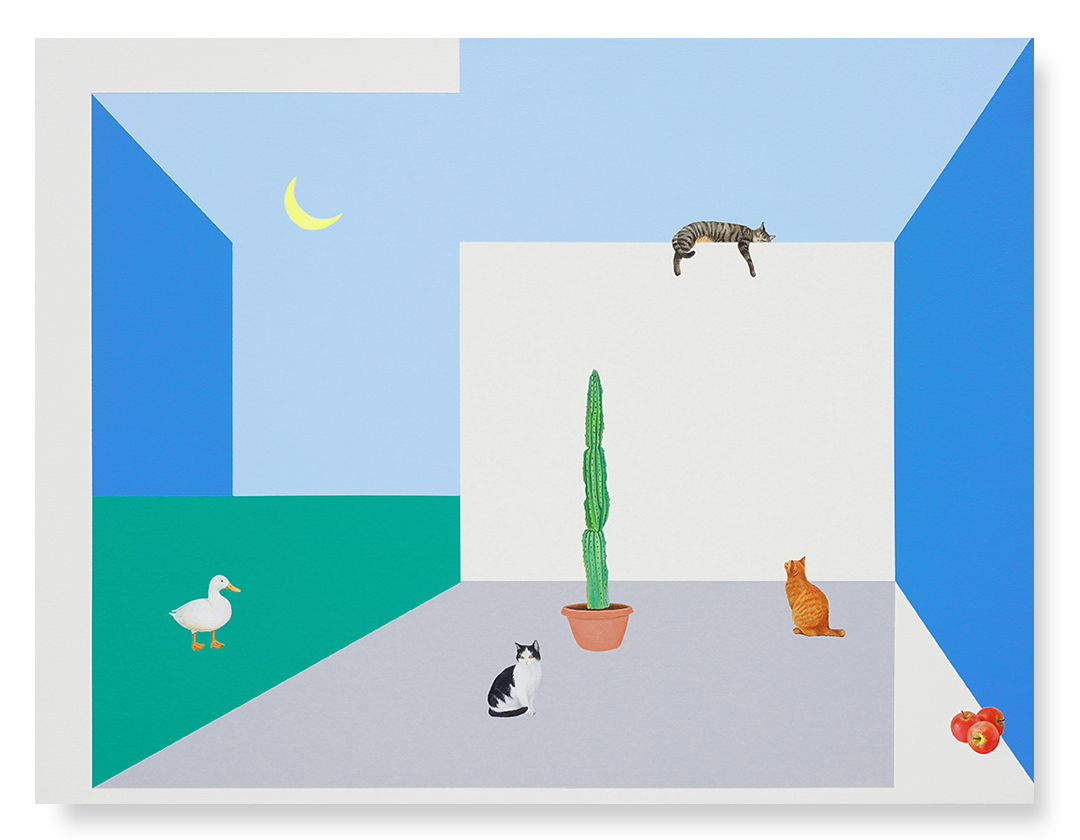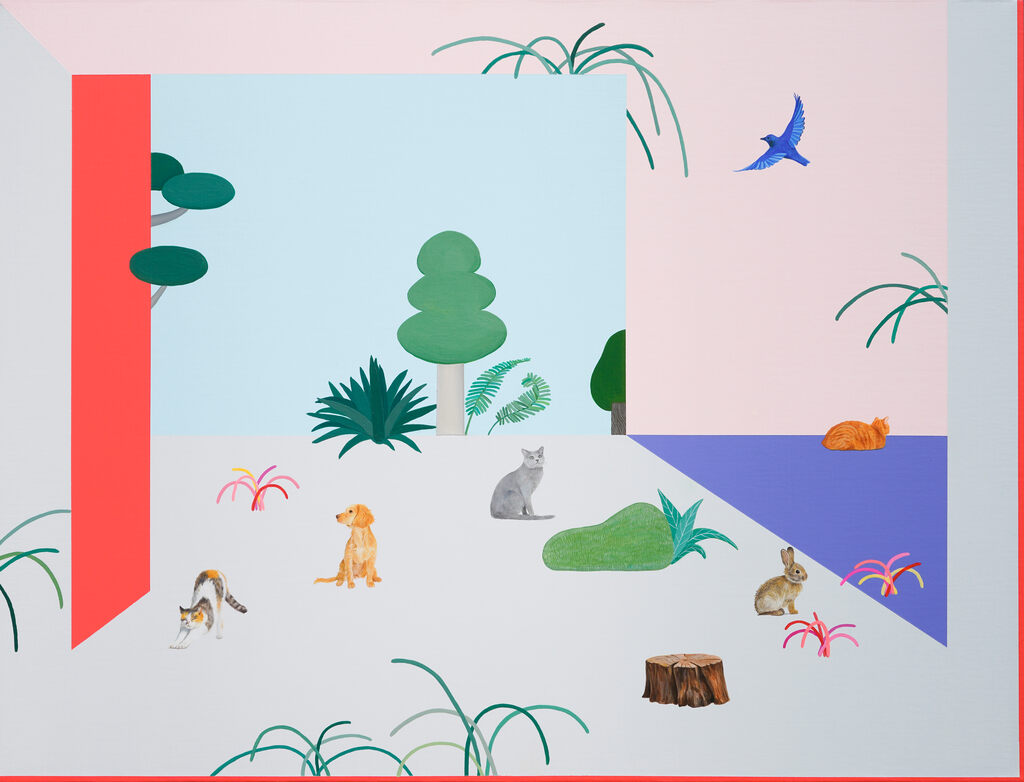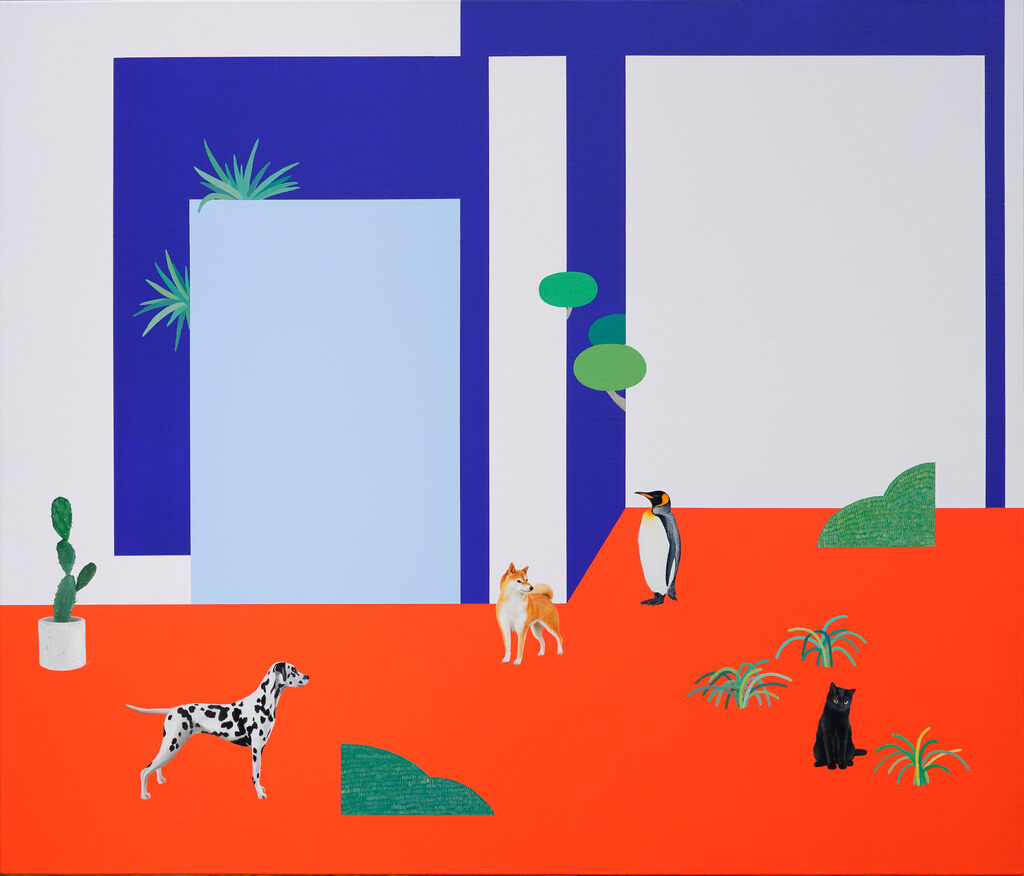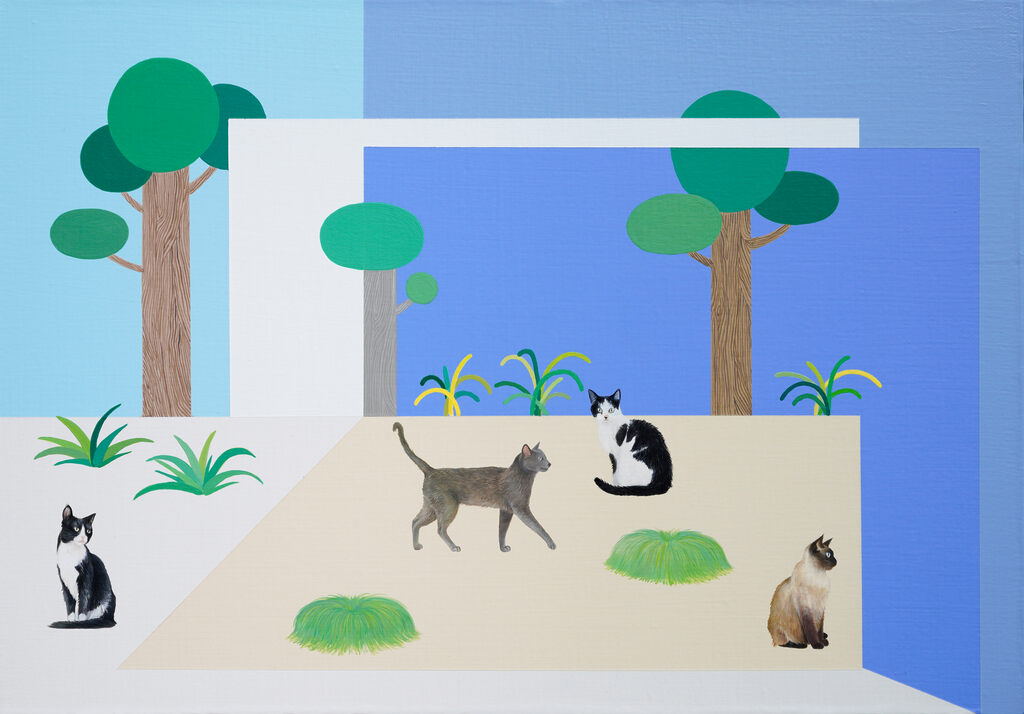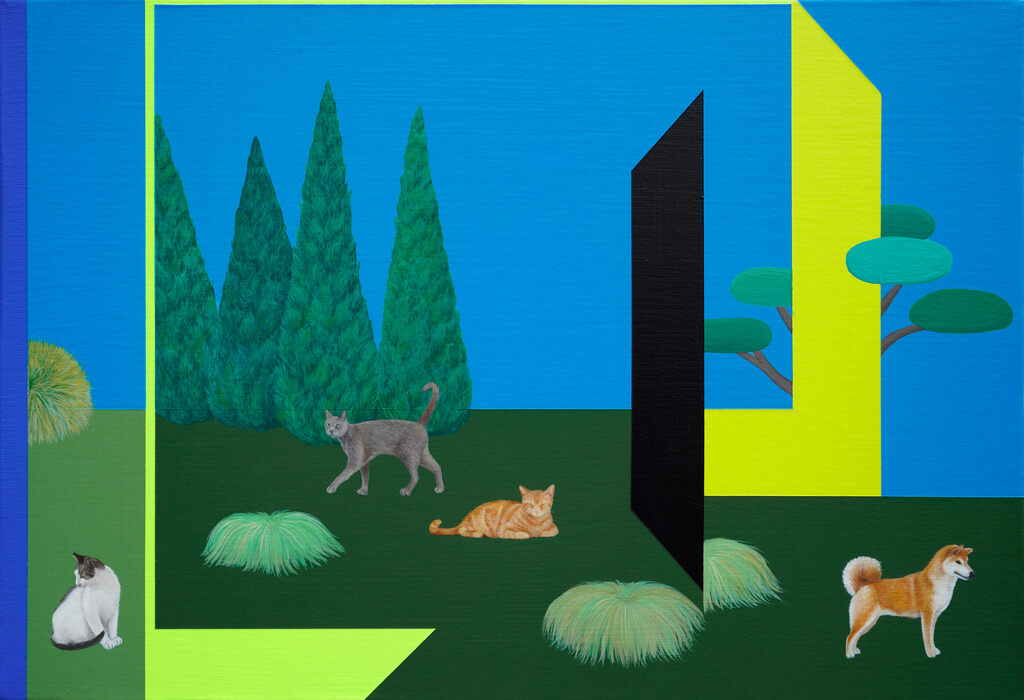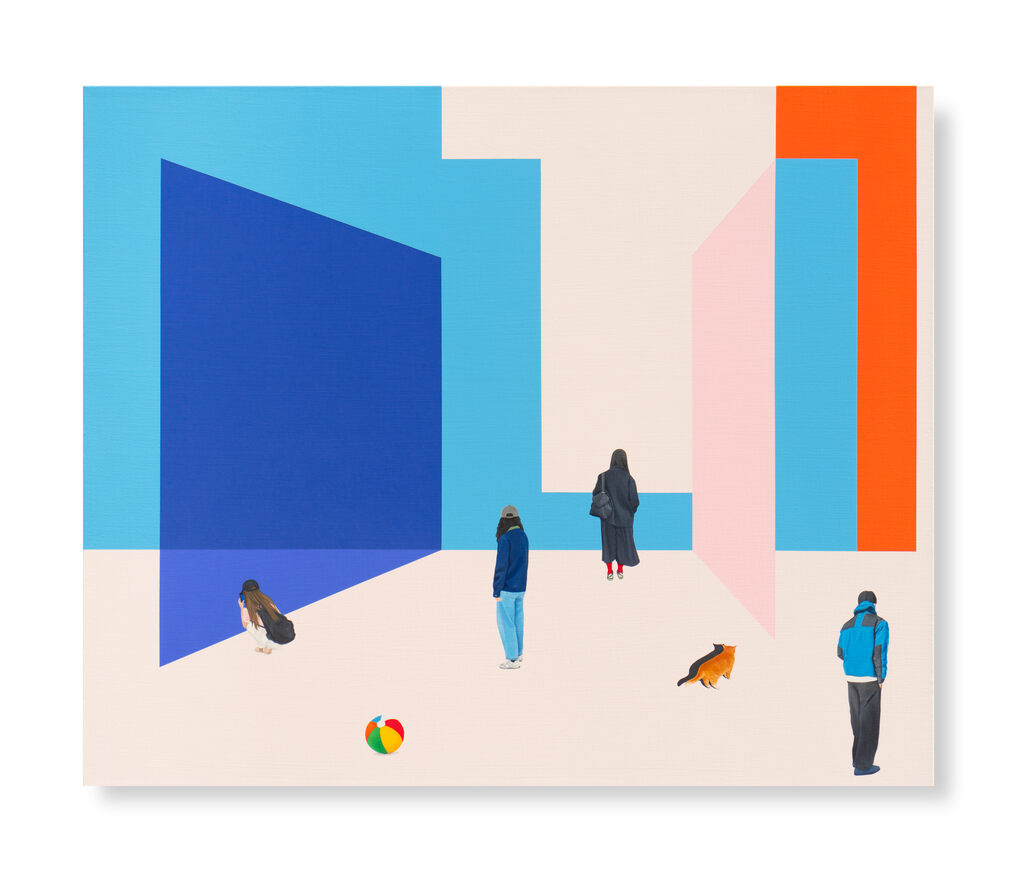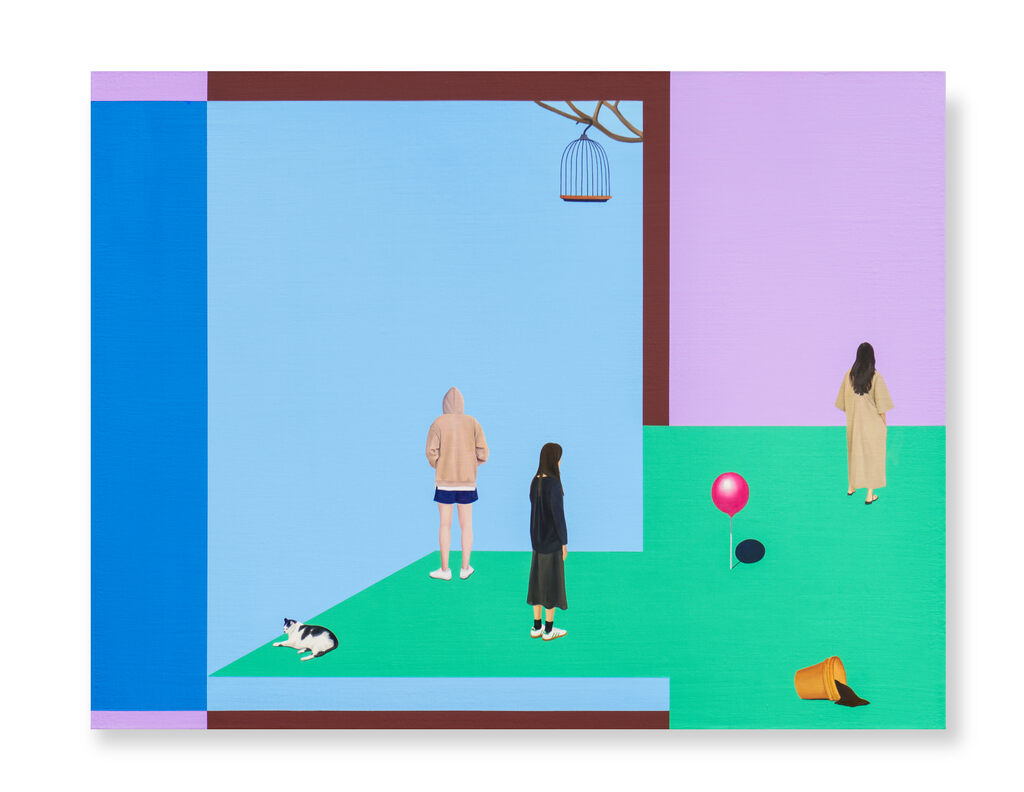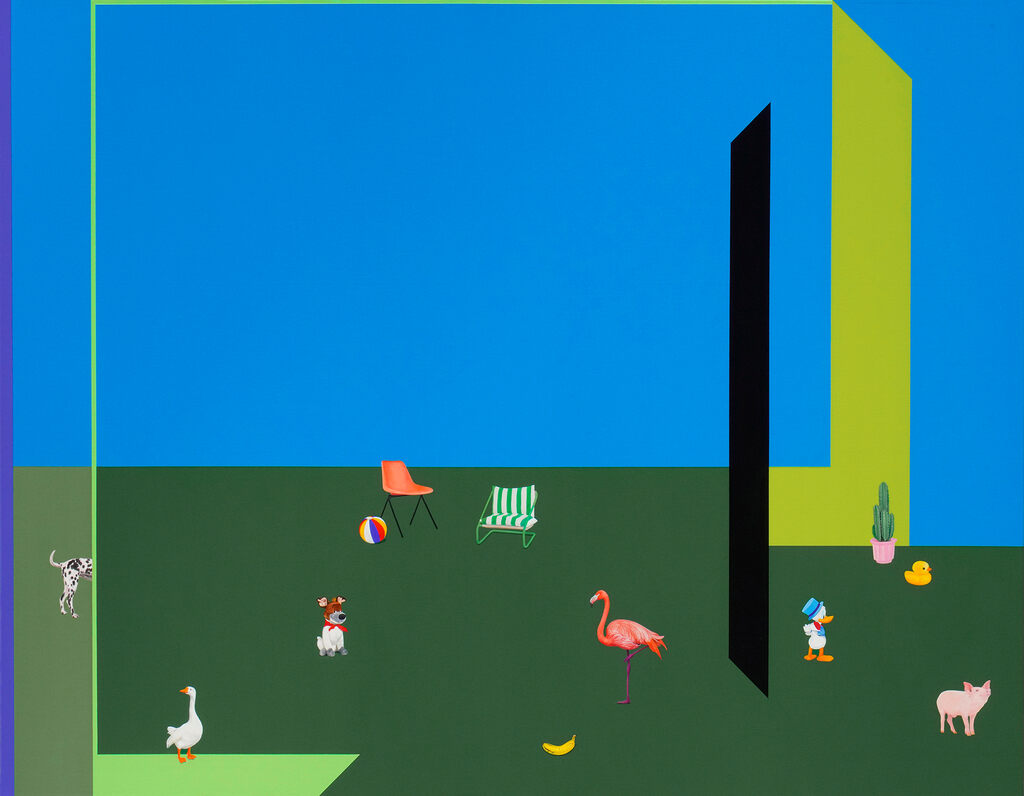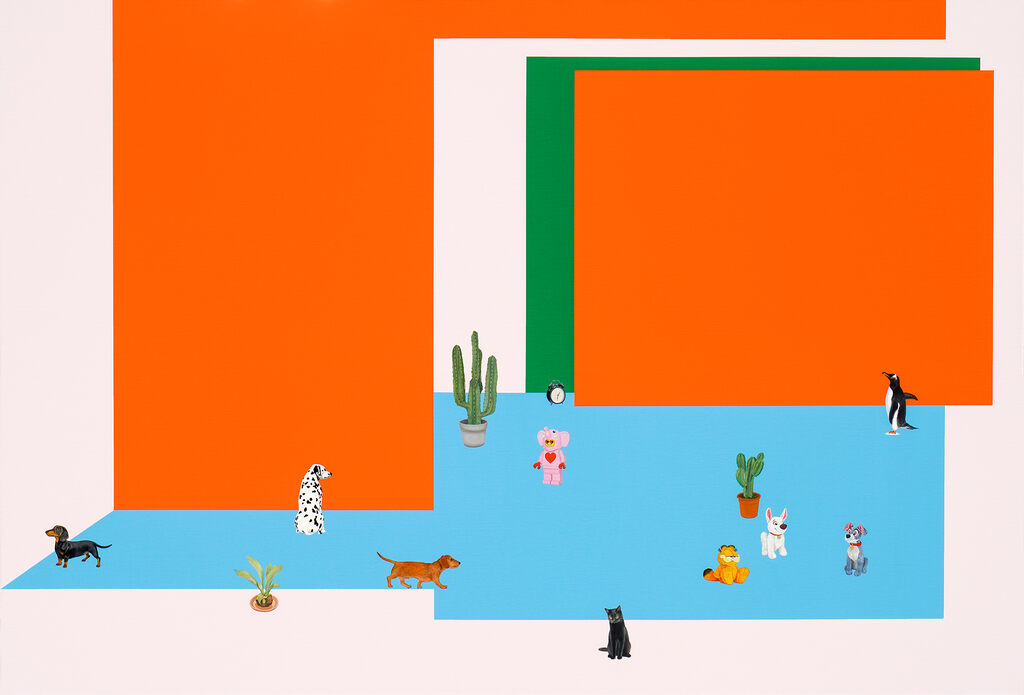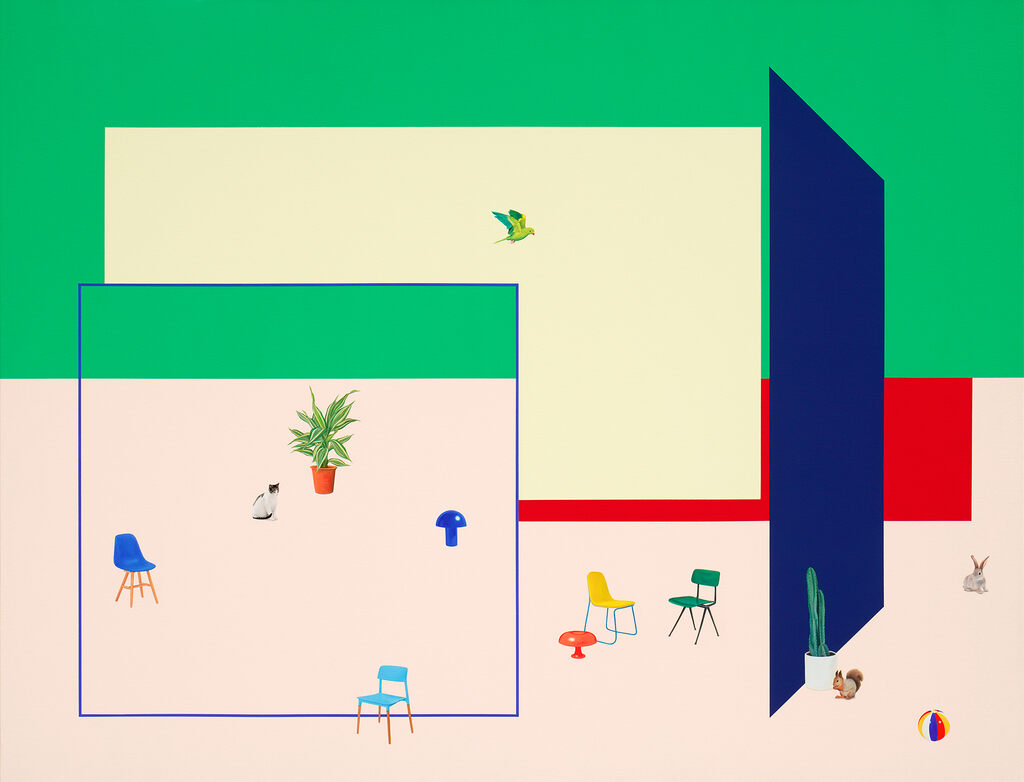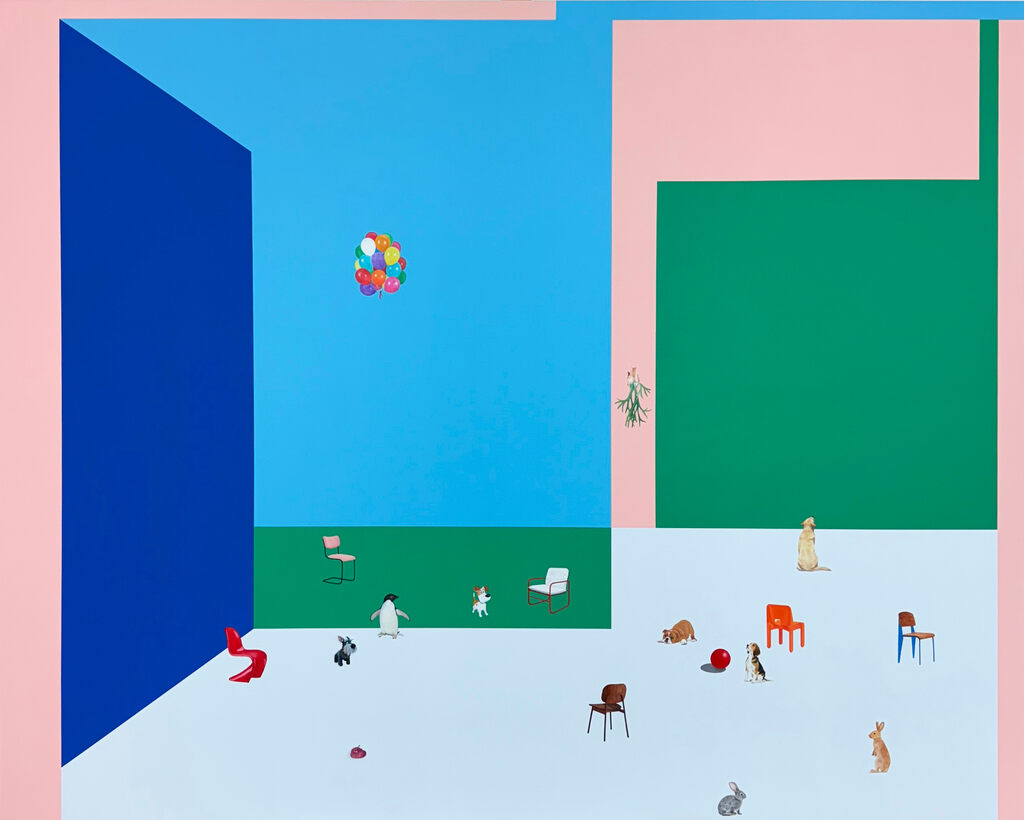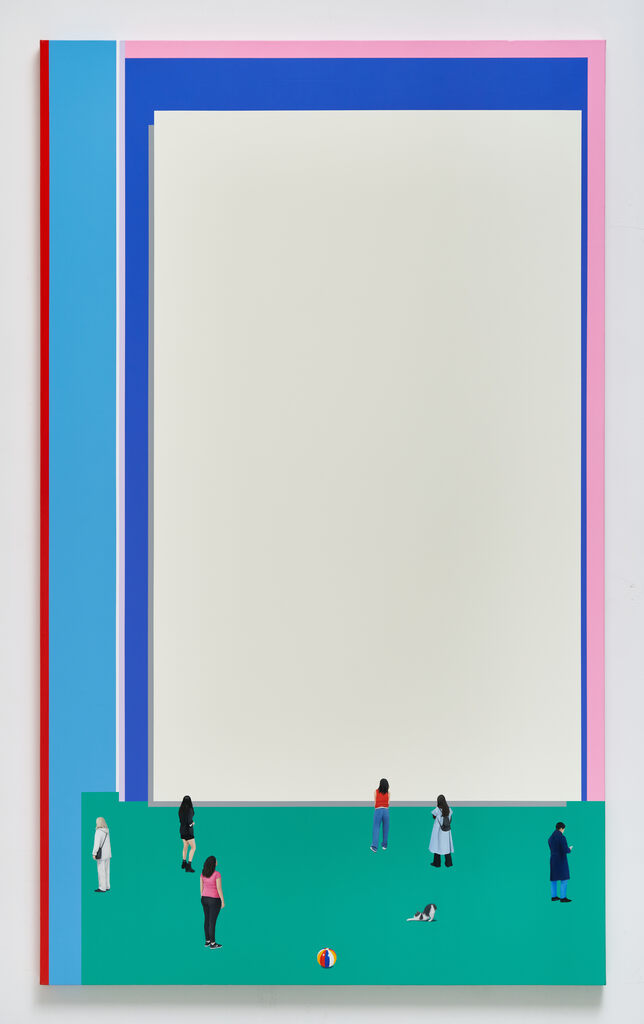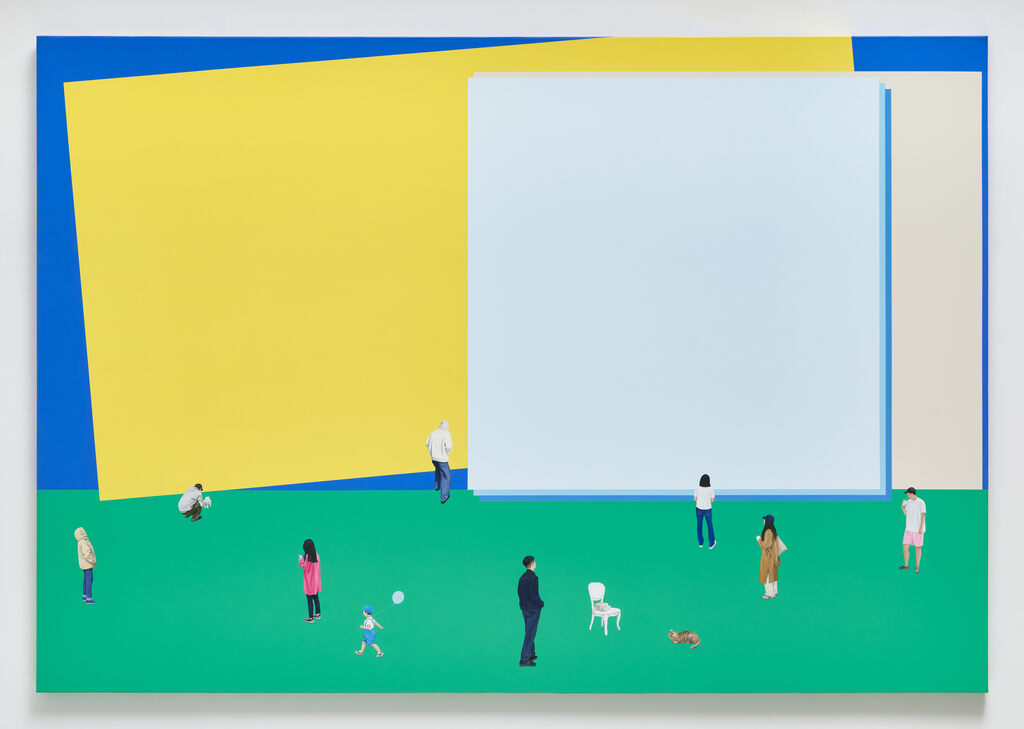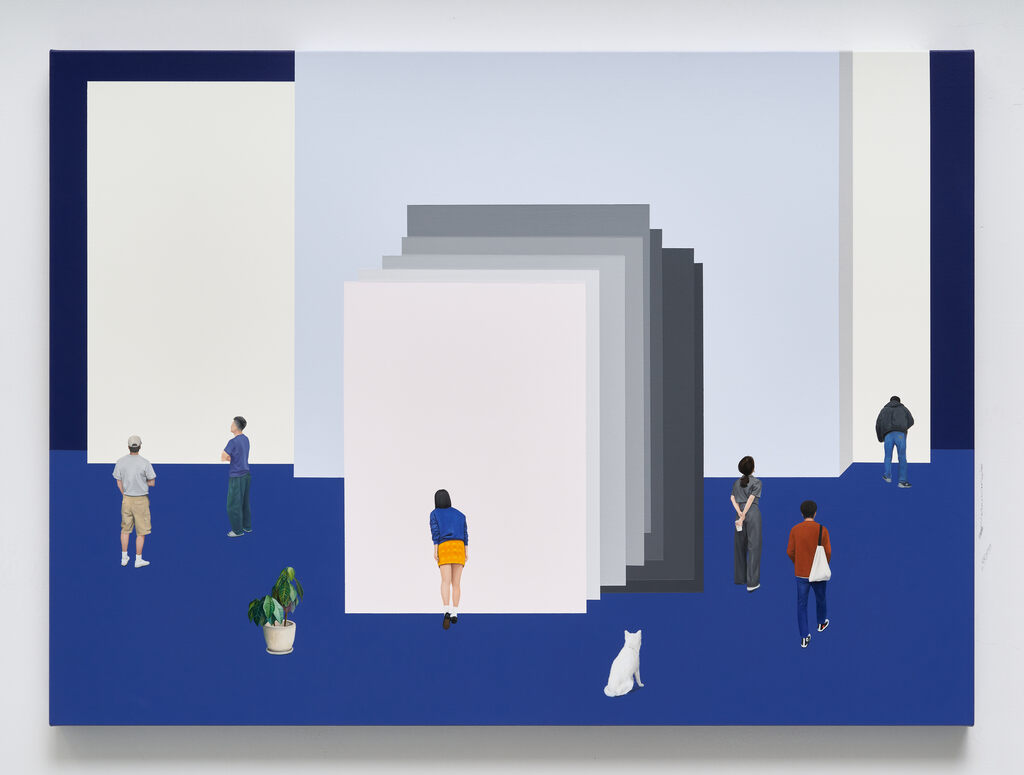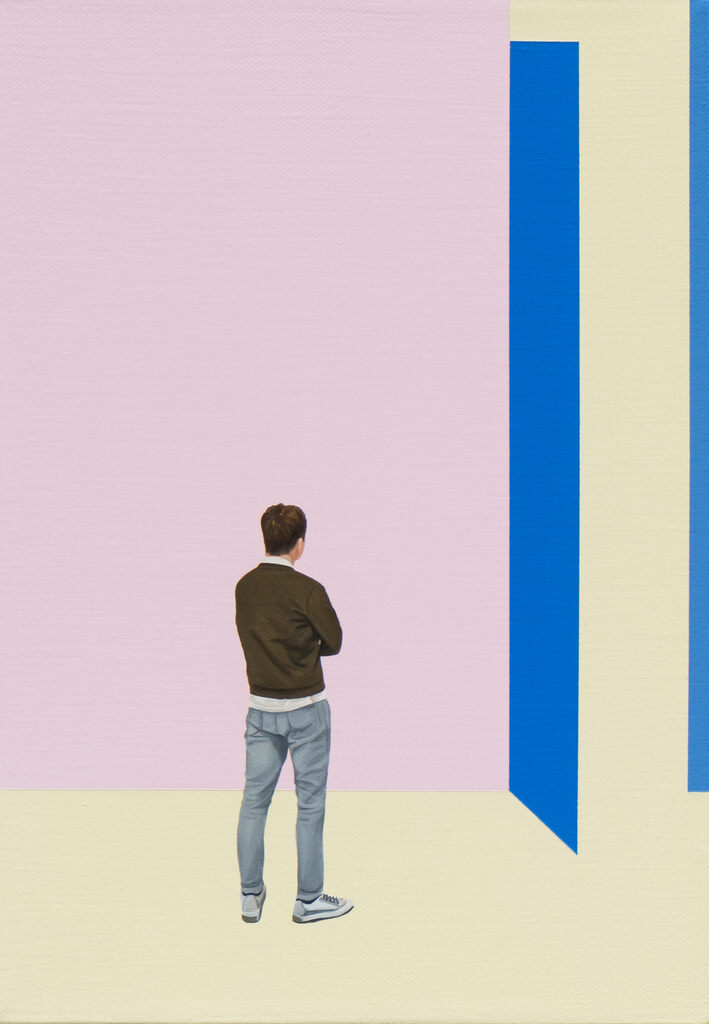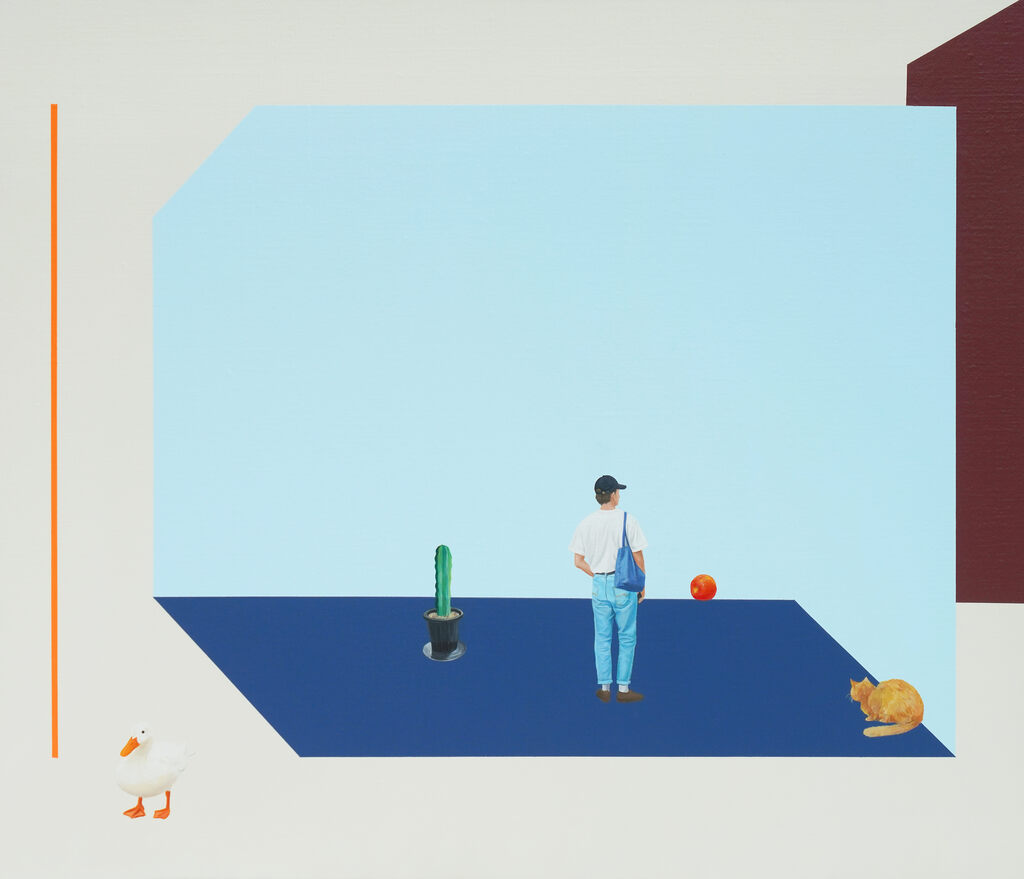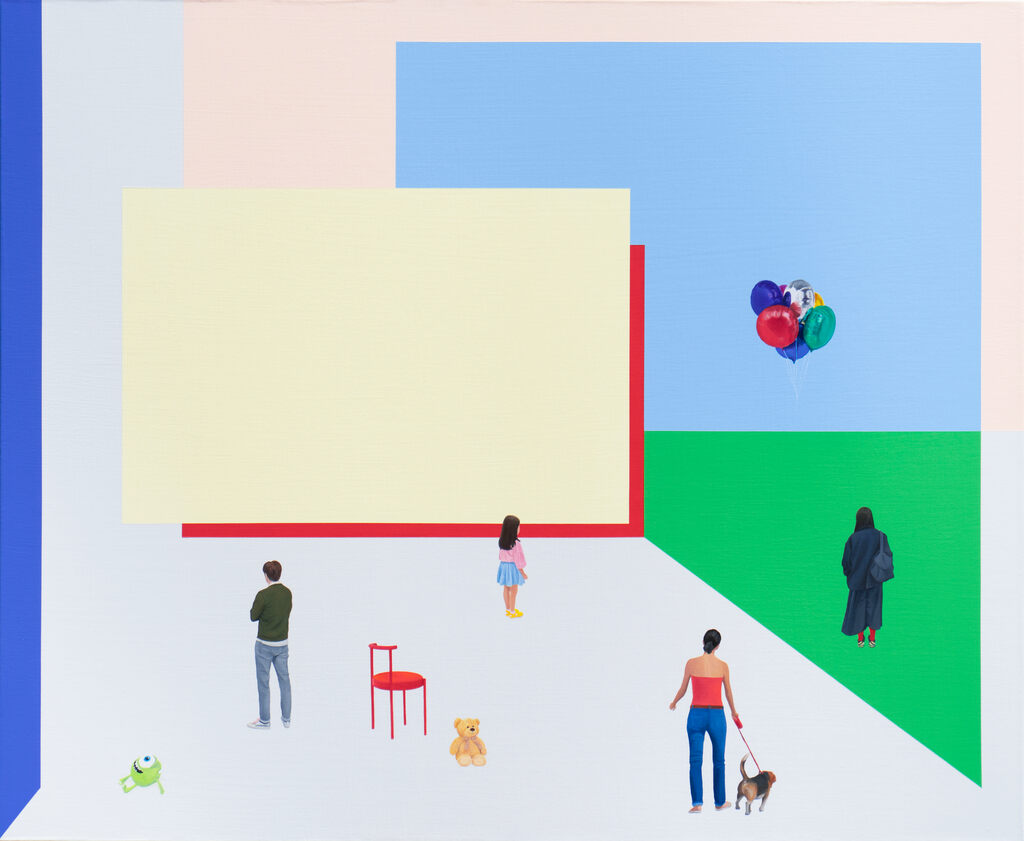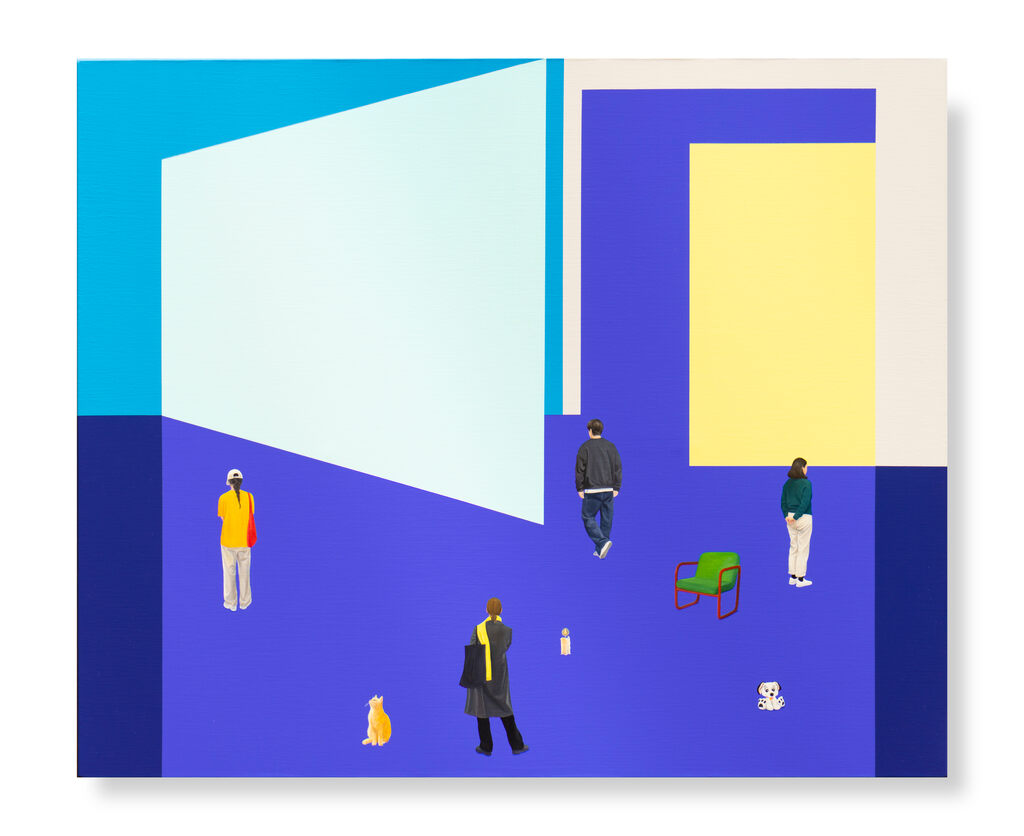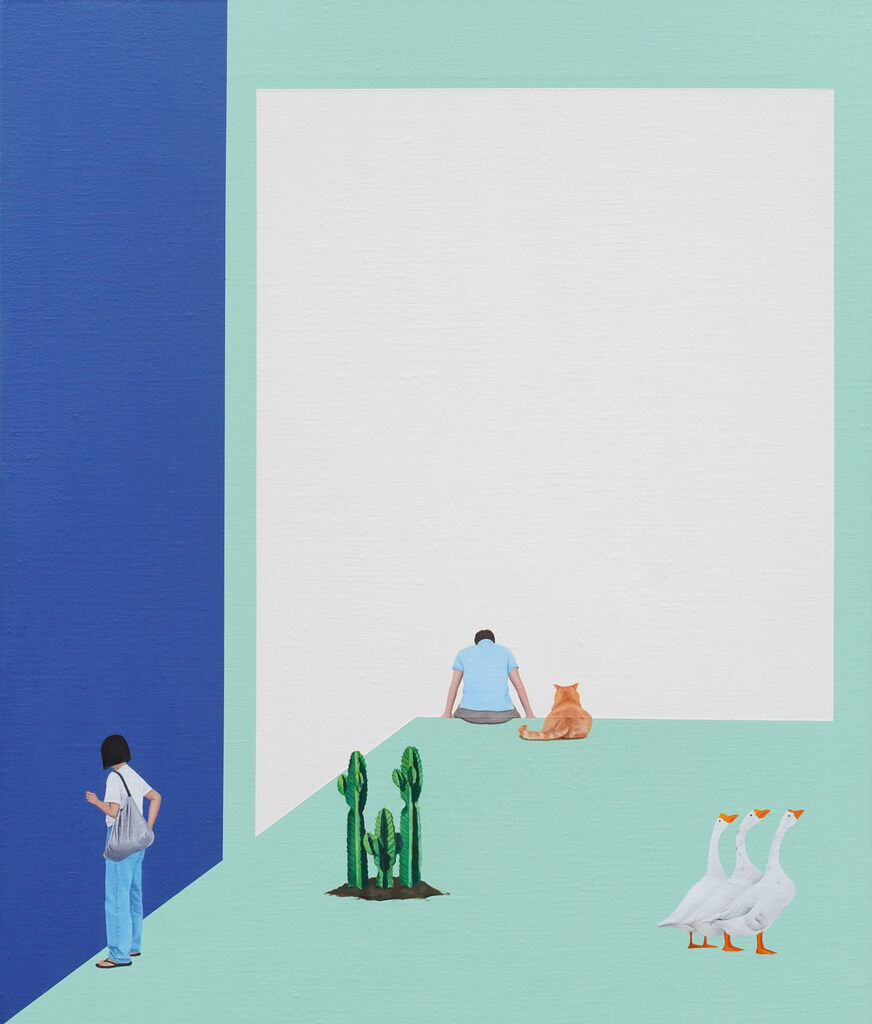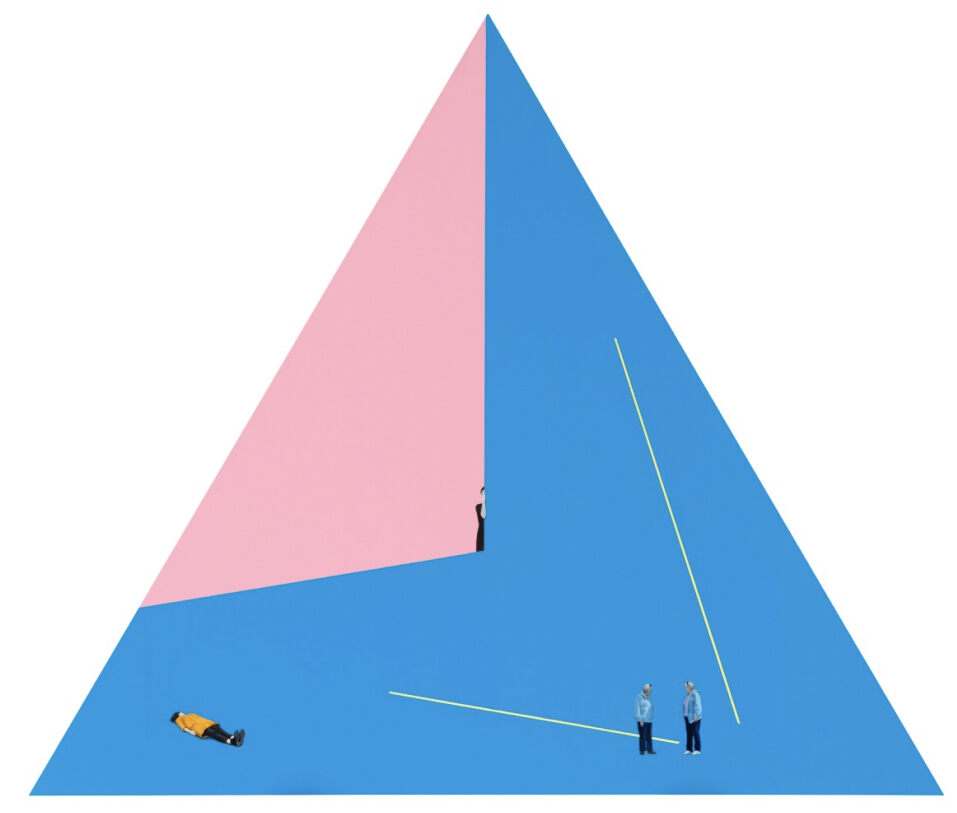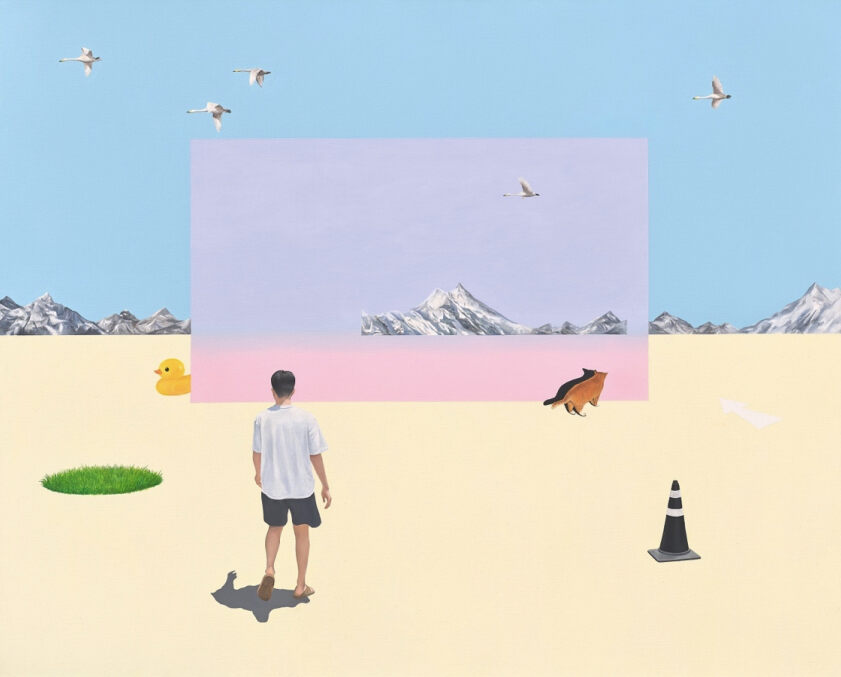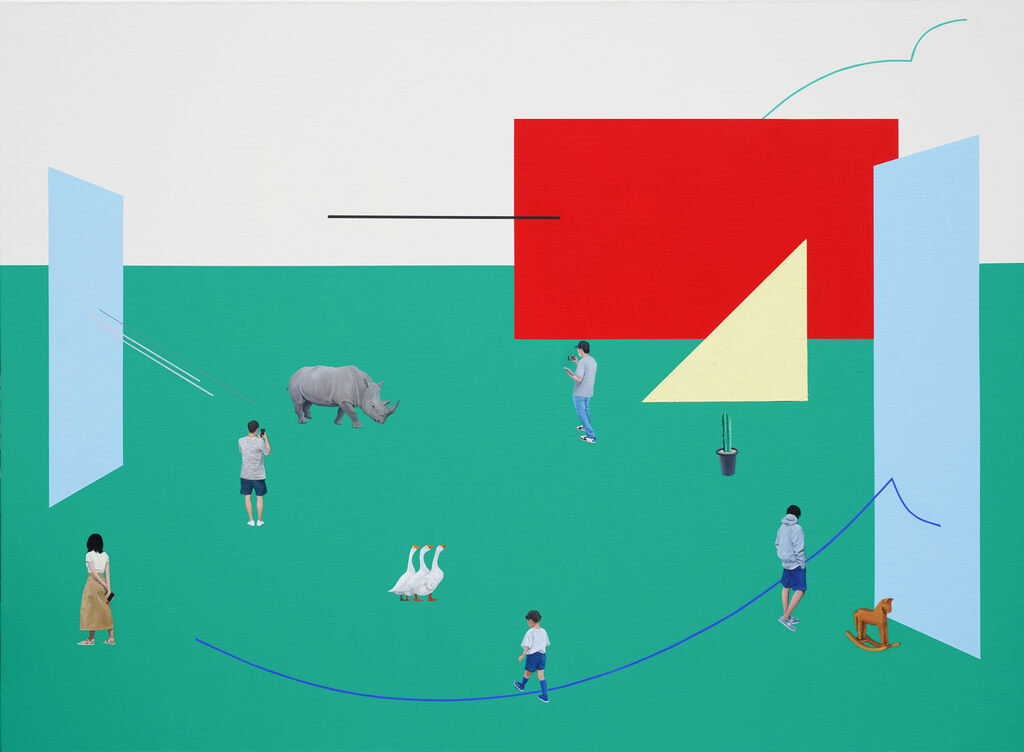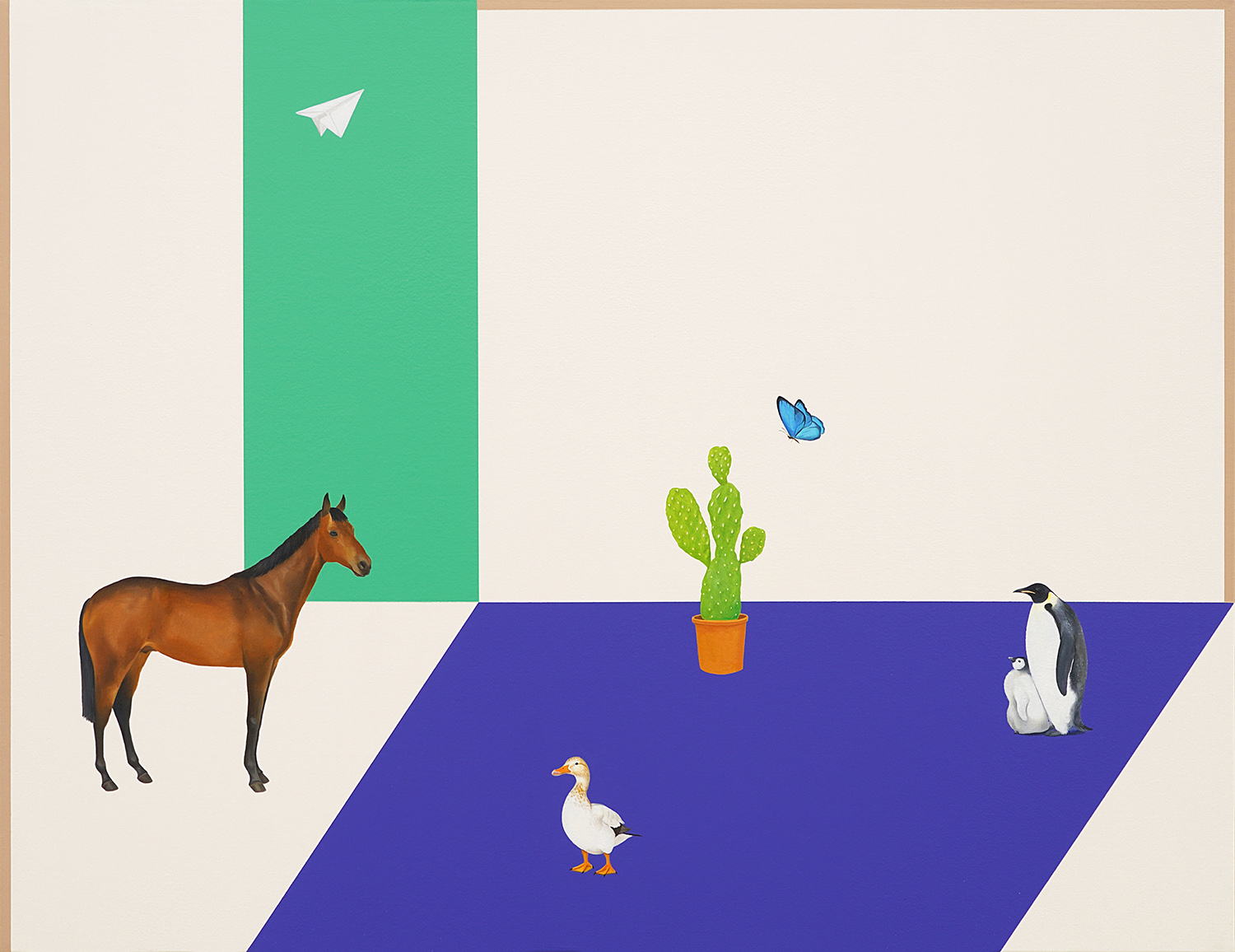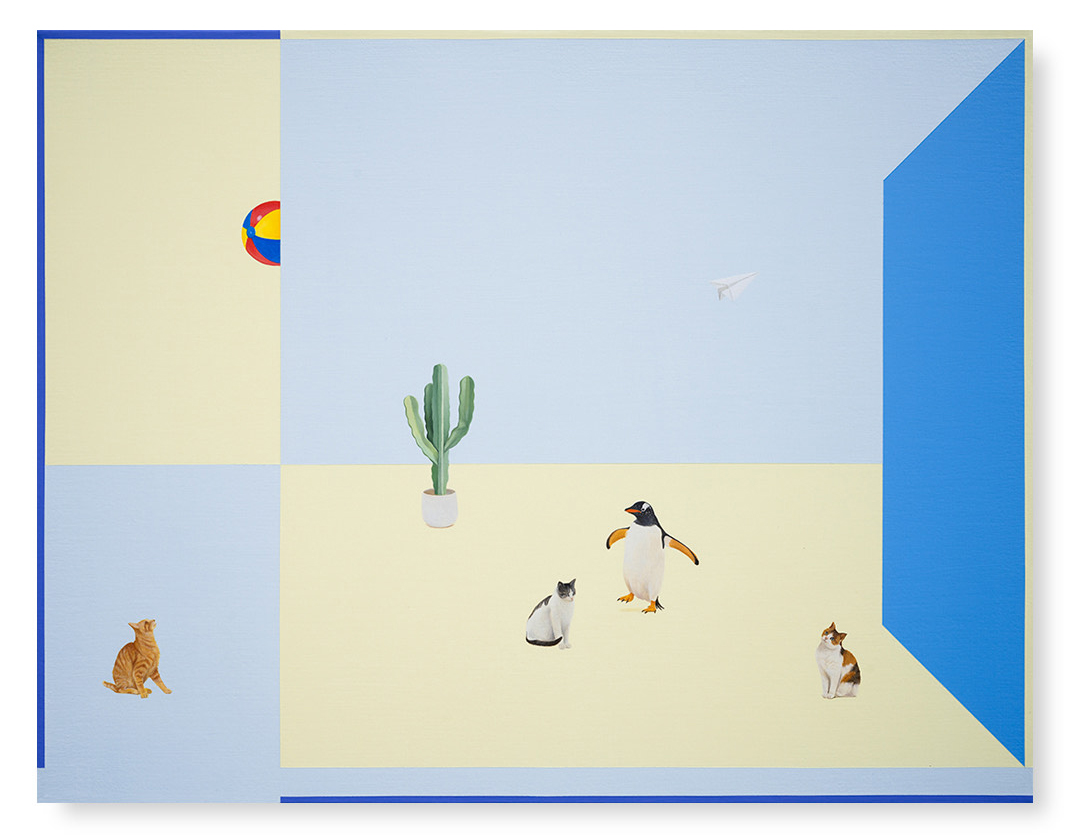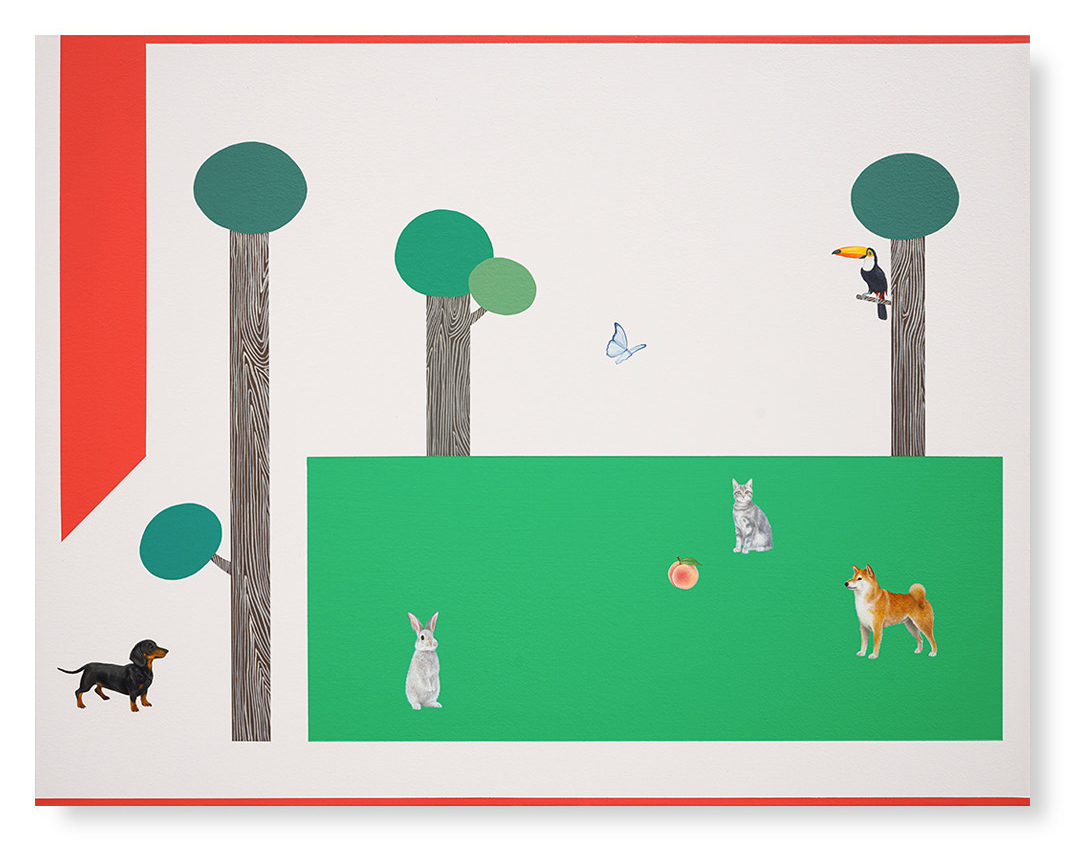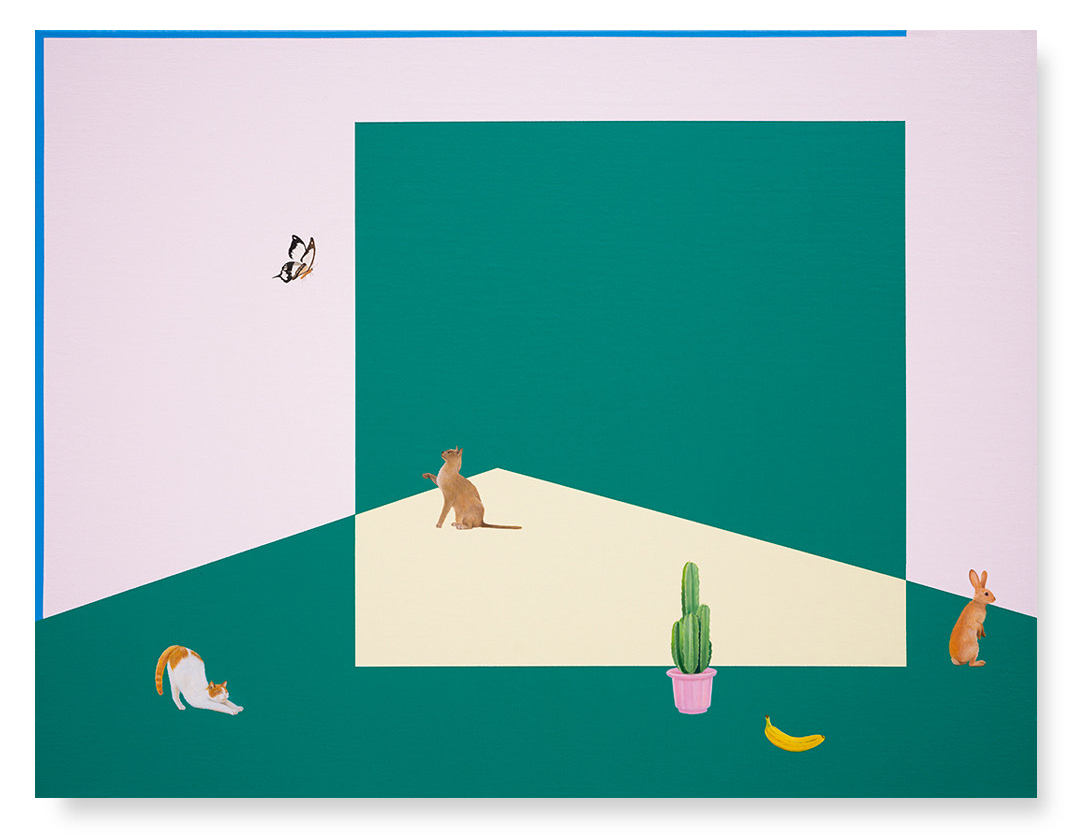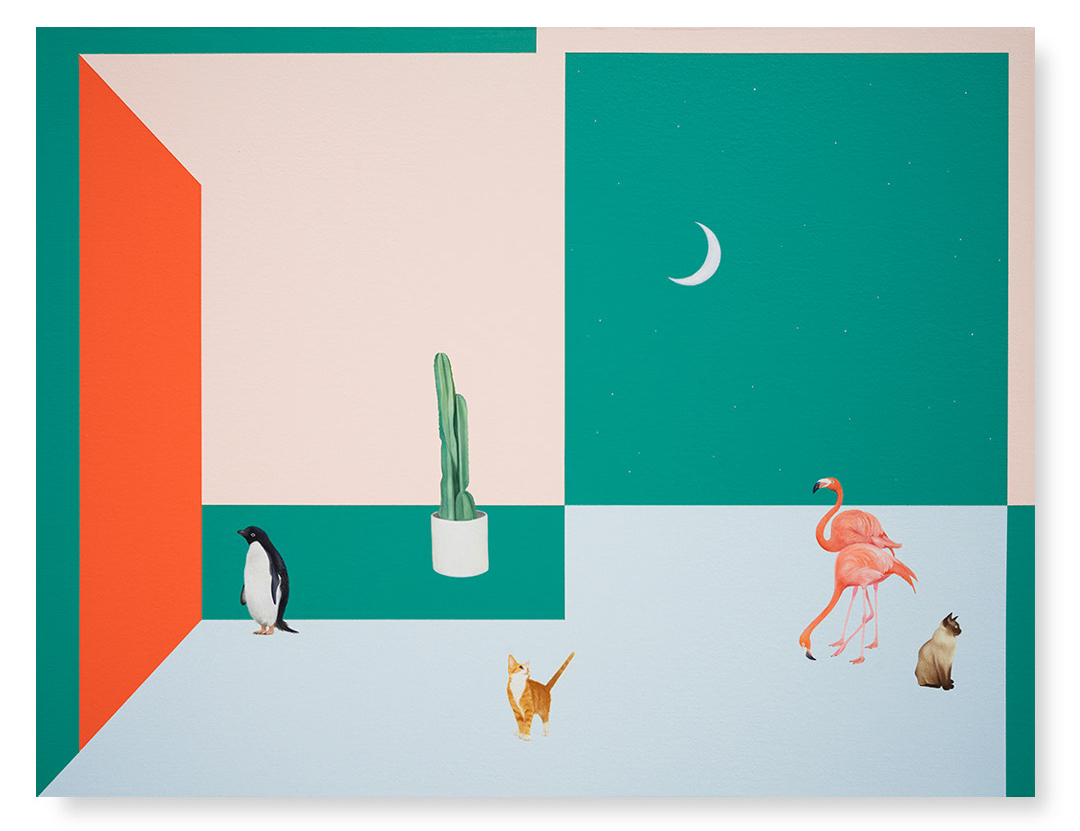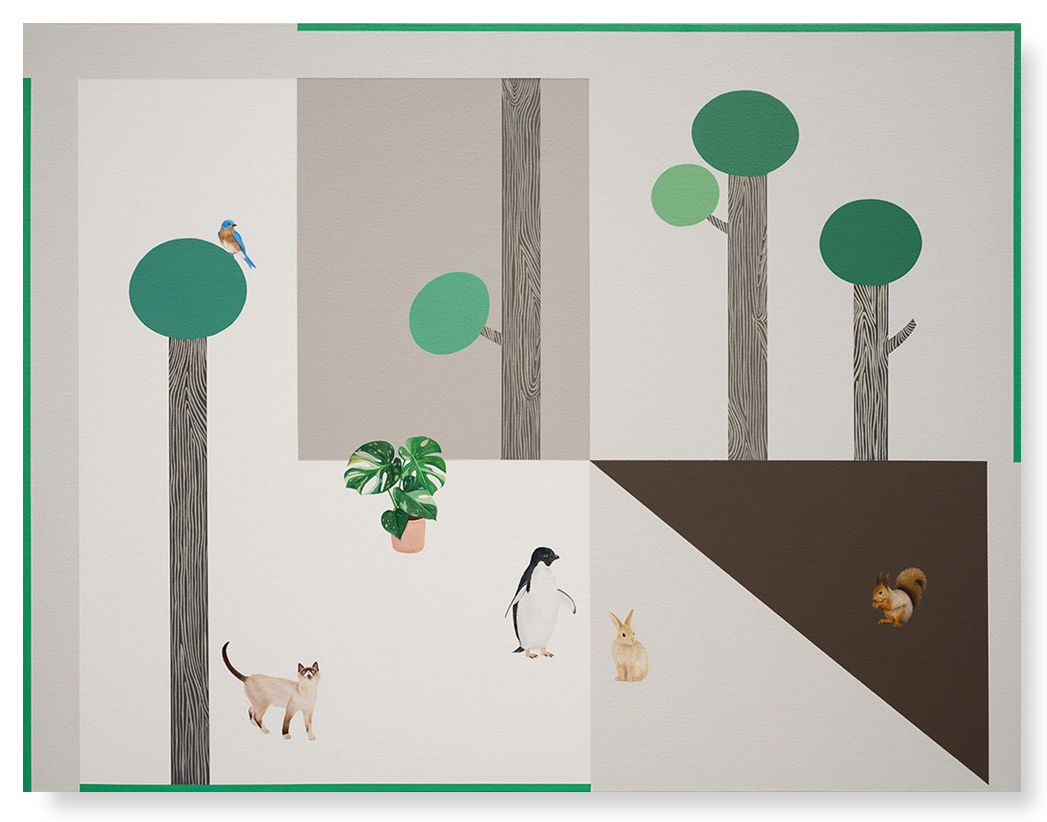- 尺寸:40.9 x 53cm
- 材質:Acrylic and oil on canvas
- 年代:2025
- 價格:NTD$ 28,000
- 簡介:
The Fissures of Emotion in a Timeless Realm: The Poetics of Sensation in the Paintings of Bomin Kim
Jung Miju (Director, Project Imago)
“True memory is less a recollection than a trace infiltrated into sensation.” —Walter Benjamin
There are moments when scenes we thought forgotten suddenly resurface. A smell, the sound of an unfamiliar street, or a single old object can trigger them. Memory returns to us unbidden, not by logic but along the grain of emotion. Emotion is always of the present, yet simultaneously the afterglow of the past. Thus, we may feel familiarity in a scene we have never witnessed, or discover our own heart in a space that does not exist. Walter Benjamin called this phenomenon involuntary memory: fragments of the past that intrude abruptly into the present through the catalyst of sensation.
Bomin Kim’s paintings stage precisely this theater of involuntary memory, visualizing the point of seepage where memory and emotion awaken together. Within her fictional landscapes, real emotions drift; anonymous figures stir familiar sentiments. These spaces are at once the still surface of halted time and dense fields of emotion, vibrating with memory that has not yet ceased.Rather than depicting concrete scenes, Kim’s practice concentrates on composing the traces of vanished or forgotten emotions. To do so, she divides the pictorial field into two distinct layers. One is a flat, vivid ground—painted without visible brushstrokes—that signifies an unreal, fictive space. The other consists of meticulously rendered figures, animals, or plants, representing tangible existence. The ground, stripped of shadows and devoid of season, beginning, or end, functions as an amorphous site where emotion and memory linger. Drawing from the sensory elements of architecture, objects, and natural forms of daily life, Kim simplifies and recombines them, constructing landscapes governed by an order other than reality. These spaces are at once conceptual and strangely familiar, fictive yet resonant with truth.
The entities within her canvases retain representational qualities: anonymous figures, expressionless animals, and objects stripped of their function. They become screens for projection, inviting viewers’ imagination and identification, and serve as mirrors that simultaneously reflect the artist’s emotions and absorb the audience’s psyche. Recurrent motifs—balloons, cacti, penguins—are emotional objects repeatedly summoned by Kim. For example, the balloon, capable of inflating or bursting depending on external conditions, embodies both volatility and fragility, symbolizing the precarious states of relationships and emotions. Such motifs pose the question of how psychological projection and symbolism operate within the painterly scene. Through them, Kim obliquely reveals the texture of emotion, the tremor of relationships, and the fragmentariness of memory.
What is crucial is that Kim’s evocation of memory does not rely on narrative representation or conscious recollection. Her painting captures fragments of the past that emerge involuntarily—emotional residues suddenly stirred by sensory stimuli. Memory, as Benjamin notes, does not restore the past in clarity but arrives as affective response, reaching us before perception crystallizes into consciousness. It is precisely this perspective that resonates with Kim’s practice. The balloon, cactus, penguin, and other motifs do not construct a narrative; they function as residues of emotion and semiotic signs, catalysts that unsettle the viewer’s unconscious. Images suffused with anonymity and blank expression, by virtue of their emptiness, become reflective surfaces enabling emotional projection. Kim’s canvases finely trace the process by which memory is transformed into sensation, and sensation into image—poetically realizing Benjamin’s “unintended intrusion of the past” on the pictorial plane.
Although figure and ground coexist on the same canvas, they never congeal into a coherent narrative. Rather, like beings from disparate times and spaces crossing paths by chance, they sustain a distance that generates fissures and tensions of emotion. The singular affect of Kim’s paintings lies in this paradoxical organicity of the non-organic: images seemingly unrelated bind together into a single emotional state. Anonymous figures, non-expressive animals, and de-functionalized objects exist to open a margin for affect, through which the viewer’s own emotions and memories are reflected and awakened. Thus, Kim’s painting seeks not the result of emotion, but the very moment of its vibration. They are translations of inner tremors into visual image, fragments of lost feeling closer to us than the world’s tangible realities.
Her work asks: Where does your memory reside now? Memory is found nowhere in the canvas—and yet everywhere within it.

